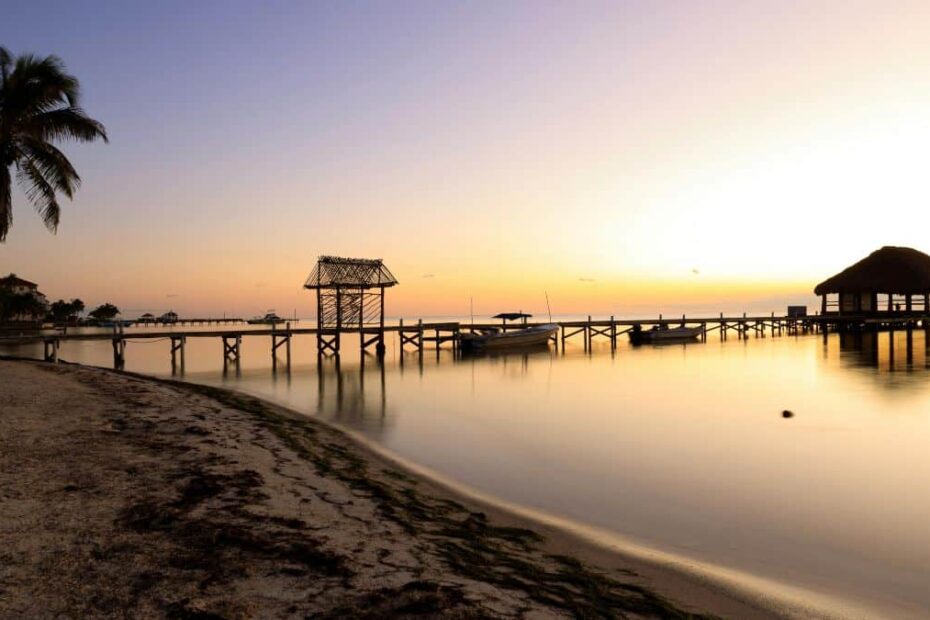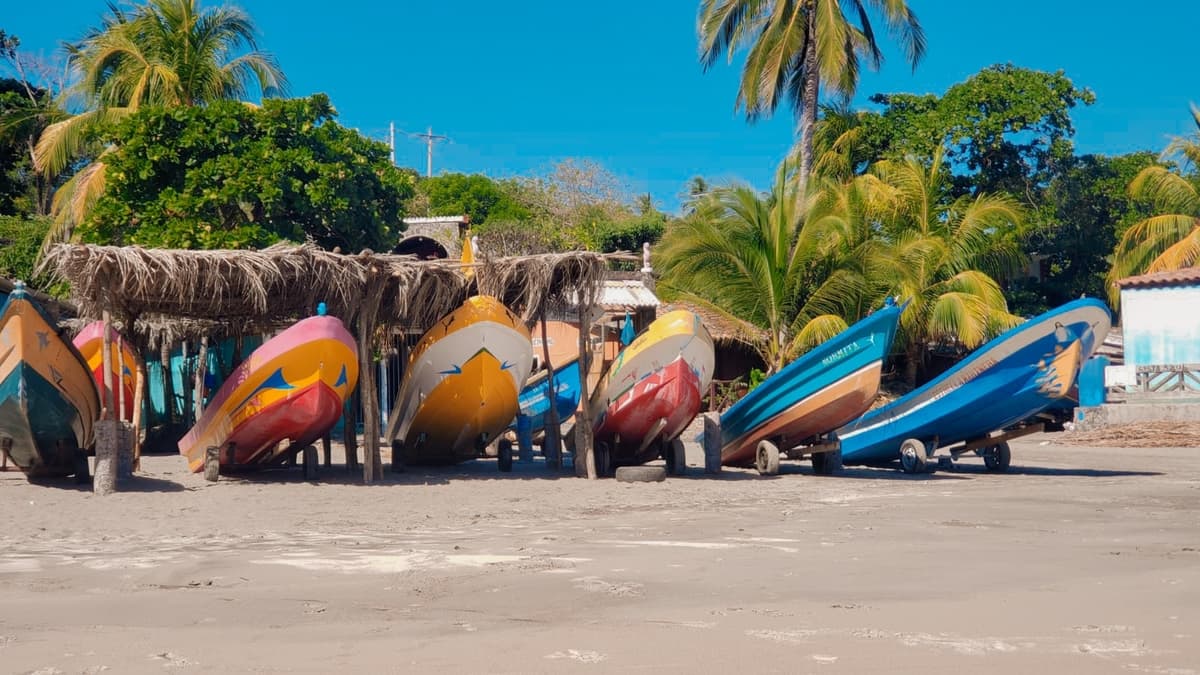Tourism in San Pedro, Belize appears to be slower than usual this summer. In this article, we look at what locals and regular visitors are saying about the drop and what they think is causing it.
Over the past few months, we’ve written quite a bit about the recent tourism slowdown in Costa Rica following what had been a post-pandemic boom. We’ve covered rising costs, a poor exchange rate, security, regional competition, and a whole host of other issues that have dented Costa Rican tourism numbers since late 2024. It’s not been pretty reading. In contrast, Belize (one of Costa Rica’s regional competitors) has been on a record-setting streak. After a full recovery from the pandemic in 2023, overnight tourism hit an all-time high in 2024, and early 2025 figures have kept that momentum going.
That’s what they say, anyway. But numbers on paper don’t always match the mood on the ground, and San Pedro – Belize’s main tourist town and a gateway to the barrier reef – feels quieter right now, according to some. Located on Ambergris Caye, San Pedro has long been the top destination for visitors seeking beach, reef, and Caribbean island experiences. With the island’s large network of accommodations, restaurants, tour operators, and nightlife, San Pedro is widely viewed as the hub of Belizean tourism.
Which is why a recent post on the Facebook page of the San Pedro Scoop, a popular blog run by a longtime expat, caught attention. It asked, “Hearing things are very slow tourism wise…are you seeing the same?” The replies poured in.
Belize’s Tourism Seasons: What’s Normal?
Like elsewhere in the region, Belize’s high season runs from late November through April, generally peaking in March. This period draws the most international visitors, thanks to winter weather in North America, school holidays, and ideal local conditions for diving and beach activities. By May, tourism usually tapers off and the low season begins, lasting through August and September and October, with things typically picking up again in November.
Many flights from the United States and Canada are seasonal (especially from Canada) and often stop at the end of April, and the start of the rainy season in June brings fewer visitors. So a slowdown in June and July is no big surprise. That said, several locals say this year’s drop feels steeper than usual.
Before we get into reasons for this, it’s worth saying here that things may not actually be as quiet as they appear. Some long-time visitors and locals pointed out on the San Pedro Scoop post that while the island feels slower, tourism might just be more spread out. There are more hotels, restaurants, and bars than there were even a few years ago. The number of tourists may not have dropped as much as it seems, it’s just they’re not all in the same places. Others mentioned that this summer lull is part of the normal pattern. So with that in mind, let’s see what they’re saying on the ground:
Rising Costs
One of the most consistent themes from the comments was the rising cost of travel. Several people mentioned that airfare to Belize has increased significantly over the past few years. While some recent deals have brought prices down slightly for certain routes, others noted that flights are still double what they paid in 2019. Travelers coming from cities without direct service, or those booking for families, are particularly affected.
Beyond airfare, general price increases in San Pedro were also noted. Visitors mentioned that food, accommodations, and excursions have all gone up in cost. A few said San Pedro is now priced similarly to places like Aruba or the Cayman Islands; destinations with more developed infrastructure and beaches that are less affected by seasonal seaweed. That comparison has made some question the value they’re getting for the money.
Even for those still traveling, these rising costs are changing behavior. Some are staying fewer nights, skipping tours, or dining out less. The result is a noticeable drop in local business activity, even when visitor arrivals are holding steady at the national level.
Sargassum
Talking of seasonal seaweed, several commenters brought up sargassum, the seaweed that builds up on the eastern beaches of Ambergris Caye during certain times of the year. It’s unsightly, it smells when it decays, and for some visitors, it triggers breathing problems or allergies. While the west side of the island remains clear, people who come to San Pedro to dive or fish are affected by conditions on the east coast. A few said they won’t return during seaweed season.
Bad Publicity
Two recent news stories were also brought up by commenters. In February, three American tourists died from carbon monoxide poisoning at a resort in San Pedro. Then in April, a man hijacked a domestic flight in Belize, stabbing three people before being shot by another passenger. Both events were widely reported in the U.S. While these were isolated incidents, some believe the headlines have left a mark.
Economic and Political Uncertainty
A concern raised by many was the current situation in the United States. Several pointed to inflation, tariffs, and cost of living as reasons people are cutting back on discretionary spending. Some said their friends are skipping international travel altogether this year, not because they don’t want to visit Belize, but because they simply can’t afford to.
Politics came up frequently as well, as they tend to do in Facebook comments from expats in Central America. Some commenters criticized the current administration, while others argued that decisions made under the previous one are still affecting the economy. Regardless of political stance, there was agreement that the uncertainty surrounding the wider political situation has made some people more hesitant to make big travel plans.
A few mentioned concerns about reentry into the U.S., including recent stories about searched phones at borders and inconsistent enforcement. While those experiences are not widespread, they have added to a general feeling of unease about traveling internationally this year.
For many Americans, it’s not just about cost; it’s also about stability. And right now, some are choosing to stay closer to home until things feel more predictable.
Concerns About Development and the Changing Feel of San Pedro
Some comments also reflected frustration with the pace and style of development on the island itself. Long-term residents and repeat visitors noted that San Pedro has changed significantly in recent years. Growth has brought more resorts, bars, and restaurants, and not everyone sees that as progress.
One local mentioned that early morning truck traffic and lagoon-side construction are now part of daily life. Others pointed to dredging work in some locations and rapid expansion elsewhere, which they feel is harming the natural environment and making the town feel more chaotic and less appealing.
Some expressed concern that San Pedro is losing the charm that once made it stand out. Overcrowding, infrastructure strain, and environmental stress are starting to affect both the visitor experience and local quality of life. A few people said they’re seeing regular guests decide not to come back, not because of cost or crime, but because the island just doesn’t feel the same anymore.
A Wider Pattern in Travel Behavior
Away from the Facebook discussion, the slowdown in bookings reported by some San Pedro businesses may not be unique. As mentioned already, it’s a major topic of discussion in Costa Rica this year and a recent industry survey by Travel Weekly found that over half of U.S. travel advisors have seen a decline in bookings so far in 2025, with nearly 28% describing it as significant.
This jibes with what several commenters noted in the San Pedro Scoop thread; with everything that’s going on right now, many Americans are hesitant and San Pedro is just be one of many destinations feeling the impact.
A Snapshot, Not the Full Picture
It’s important to note that the observations highlighted here come from a Facebook post and reflect the views of those who chose to respond. They’re anecdotal and don’t necessarily represent the experience of every resident, visitor, or business owner in San Pedro. As with any online discussion, the most active voices tend to be those with the strongest opinions.
Not all commenters had a gloomy take on things, either. A few business owners said their bookings are still strong, and others suggested possible ways that Belize could compete more aggressively with other destinations, including cutting the country’s departure tax to lower airfare, ramping up marketing efforts, or bringing back some local character to San Pedro. There were also those who welcomed the quieter pace.
Still, the variety of comments paints a useful picture. They highlight the mix of global, local, and seasonal factors that can influence tourism in a place like San Pedro. Bottom line is that while it’s been a tough stretch for some, the appeal of San Pedro remains strong. The reef is still one of the best in the world. The town still has great food, excellent accommodations, friendly locals, and no shortage of things to do, including the upcoming Lobster Fest, which should bring plenty of people in. But whatever this summer turns out to be, many are already looking ahead to high season.




